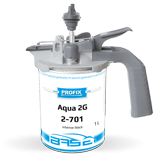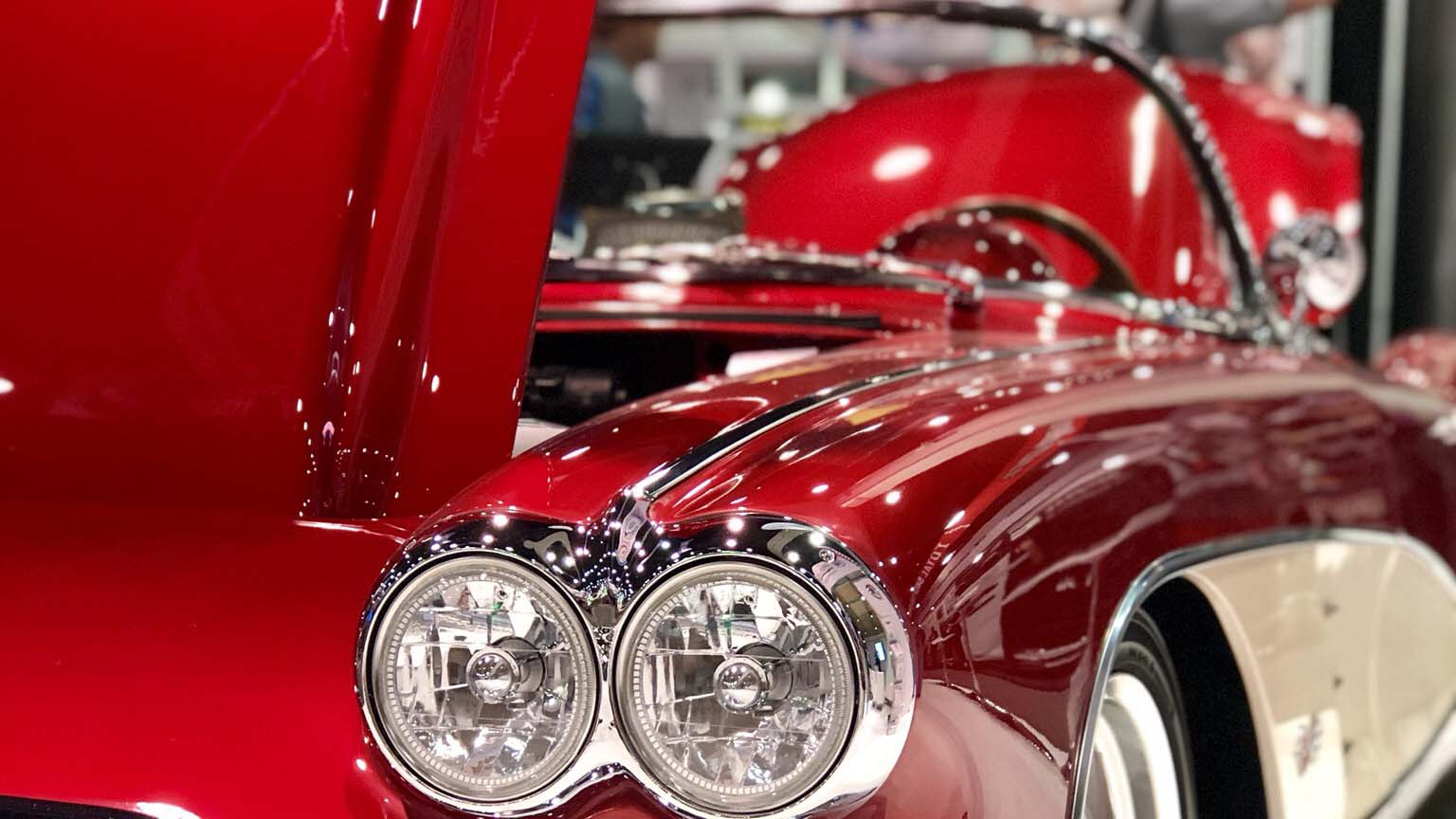Recently added
Most read
Why use the water-soluble lacquers, when the conventional ones are available?
With a putty knife at hand
With a putty knife at hand
Not so long ago, amount of putty that can be used to repair the car was considered as a joke. In technology, a lot has changed and it is difficult to meet a person who will devote so much time to modeling large surfaces. Now, the time and quality of the repair is put first in order to achieve a lasting effect. But can you completely give up on using a putty? Of course not, because filling is the basic skill the refinisher acquires at the very beginning of education. This method can be irreplaceable for leveling the unevenness of surfaces created as a result of hail or after sheet metal works.
The putty is by definition a filling mass which, after modeling and full curing, gains resistance to many adverse chemical or physical conditions. The putty is to replace the plate in the place of damage and should combine two features:
- be soft in processing, thanks to which we can shape any shape which is later polished in the preparatory treatment.- and create a hard coating after drying which will provide a durable base for complete painting repairs.
The basic and most important component of the putty is filler, which can be in the form of talc, whose varieties we have on the market a huge amount. Thanks to that each putty has different properties. Currently, more and more often in lightweight putties, so-called Glass microspheres that provide a better flow of the putty with lower viscosity and are also more chemically stable. You must also mention the right hardener, which is usually sold with a putty knife, it is necessary to use only the one recommended by the manufacturer. This will ensure proper curing and will not contribute to subsequent paint defects. The hardener contains in its composition organic peroxide, which binds all ingredients of the putty knife, but it must be remembered that it is dangerous, so do not forget about the personal protection measures while working with the putty knife.
We have a variety of putties available depending on the purpose, but most importantly, the type of substrate being repaired. Filling masses can be divided in terms of different properties. The first putty to be mentioned is the so-called structural used for large fillings. They have glass or carbon fibers that perform reinforcing functions (eg CP 336 Glass by Profix). The resulting structure is durable and resistant to cracking, because the larger the surface, the greater the force. It is recommended to use this product during repair, where the losses are large and there is no possibility of replacing the element with the original one.
The next spatula that enjoys great interest is the so-called metallic which can be recognized by contained aluminum particles (eg CP 335 Metallic by Profix). Thanks to the addition of metal to the filling mass, we obtain a characteristic feature which is the uniform distribution of heat throughout the entire element. As a result, there are no intense stresses that can result in cracking at the application site. It is recommended especially in elements heated intensively by the sun, especially placed in a horizontal position and where there is exposure to heat emitted by the engine. Along with the growing popularity of aluminum rims, this type of putty fits perfectly into the needs of varnishers and is used to repair them.
We should also mention products characterized by high flexibility. They find application on plastic elements that are flexible and therefore exposed to higher stress (eg CP 341 Plastic Profix brand). A significant problem with such substrates is adhesion, thanks to specially selected components we avoid cracking the element in the place of repair.
For applying thin layers, traditional polyester putty is used, which is generally known as Soft (eg CP 334 Soft plus by Profix). They are used where there is a need to slightly improve the surface in order to ensure the optimal repair effect. Here we should mention the new generation of light putties in which the reduced density is characteristic (eg CP 339 Perfectly light by Profix). This is achieved by replacing the heavy talc with a modern filler, such as microspheres.
For larger work, when it is necessary to apply a putty to large surfaces with a complicated shape, we use a polyester putty (eg CP 332 finish by Profix). It finds application especially in the reconstruction and oldtimers restaurants.
But how do you put your fillers correctly? First of all, we should obtain tools that would facilitate our work, such as "Japanese" metal spatulas, plastic spatulas, rubber spatulas or trays on which we mix a putty knife with a hardener. Proper handling of the filling requires from us first to clean the surface with a remover (eg CP 015 brand) from residues of dirt, dust, silicones or waxes. Then, protect with foil or paper neighboring elements, the edges of which can be secured with reinforced tape so as not to damage neighboring surfaces. Now we can proceed to the grinding of the surface, giving it grip. Remember to use paper gradation recommended by the putty manufacturer.
Remove the grinding dust residue using a suction device and then re-clean with a silicone remover. The putty mass is made of two components in the proportions given by the manufacturers (there are also one-component putties). Manufacturers of putty for ease of work with the leveling compound applied different colors of the hardener and leveling compound so that we get the right way to mix, (a homogeneous color indicates the correct preparation of the mix). An interesting solution that can be found is the ease of dispensing the hardener to putty thanks to dispensers. In this case, squeeze the trowel and hardener in the correct proportions with the possibility of adjusting depending on the ambient temperature. After re-mixing, we have only a few minutes to apply it. We put the putty on the place of repair, depending on the need, obtaining a similar shape. After the putty has dried, we proceed to grinding and here we will need such instruments as blocks, hand blocks and an oscillating grinder, preferably with dust extraction. For sanding the putty we use the indicated gradations of sanding paper with the right grading, preparing the surface for the next stage of technology, i.e. filler.
Finally, I will mention some important tips that you need to remember about using a spatula.
- Firstly, remember that adding more hardener will not accelerate drying, and it will certainly contribute to discoloration on the top layers of varnish. That is why it is so important to use the proportions recommended by the manufacturer.- Do not apply a too thick layer of putty once, as cracks on the leveling compound may occur during drying.
- Dry putty in ambient temperature above 5 ° C or using a radiator. Here, however, technical cards for a given product will be necessary because too low or high temperature may affect the curing.
- Wet sanding is not recommended due to the absorption of water through it, which may cause corrosion and difficulties with drying. A leveled surface exposed to high humidity should be insulated as soon as possible with a backing material.
- Use the appropriate thinner in this case polyester putty will be necessary thinner polyester. - When dealing with a single-component putty, remember that it can be sensitive to thinners contained in foundations and varnishes.
- Do not apply polyester putty on reactive soils, as you will not get any adhesion to the substrate.
- Before using the putty knife, it is necessary to check with what substrate we will work and choose a product with appropriate properties for it.









